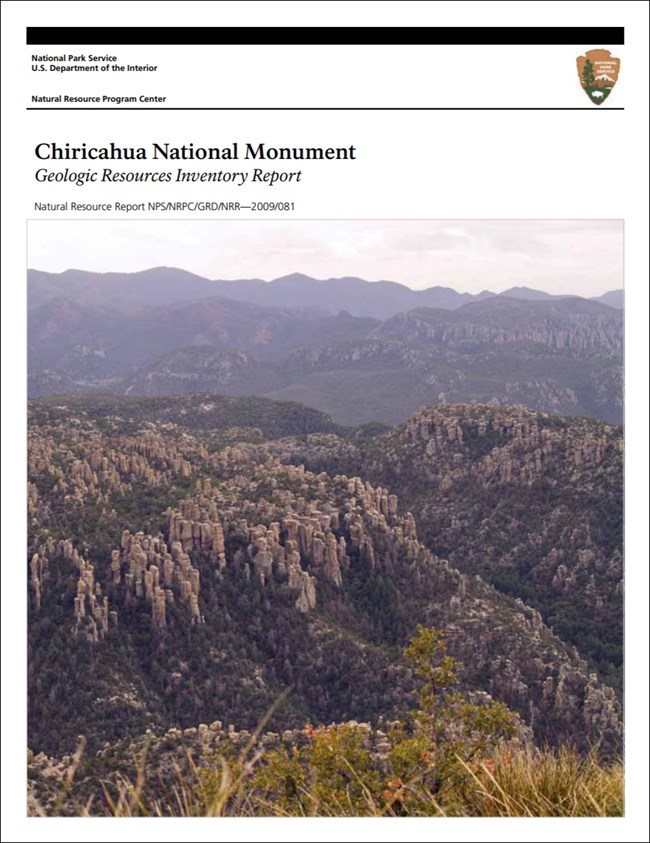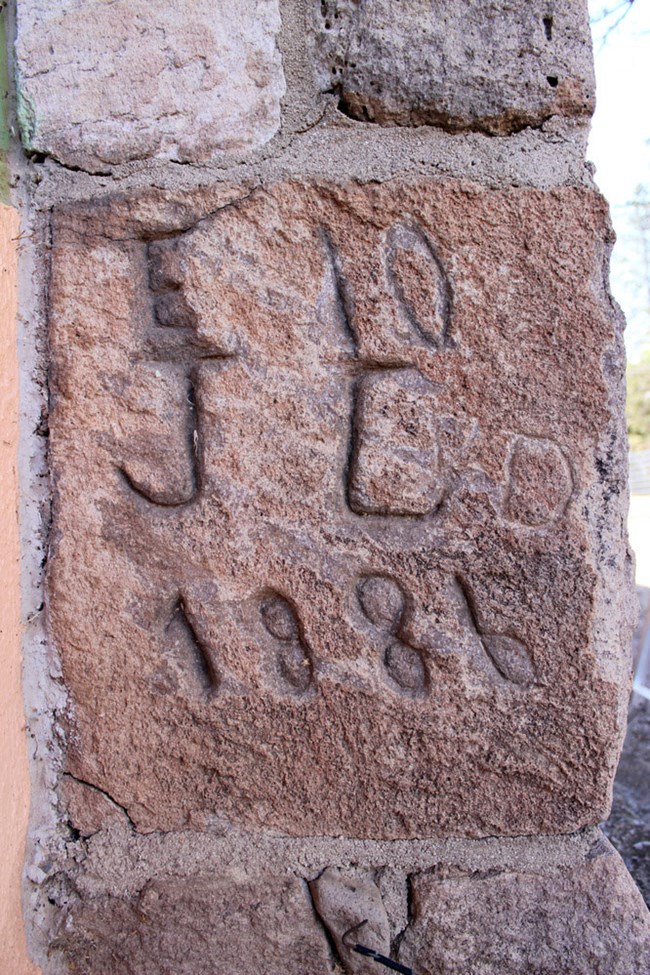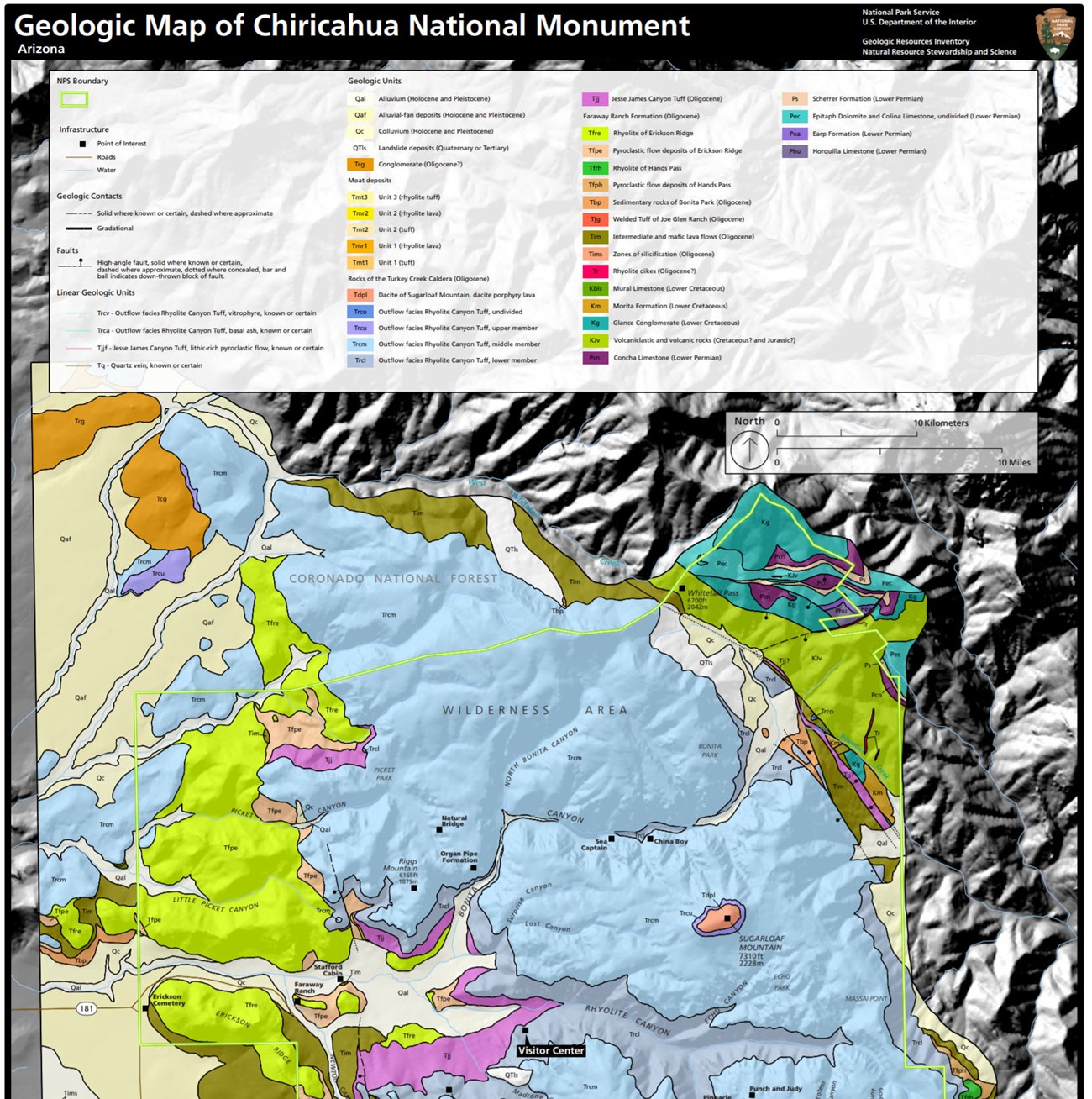Last updated: June 14, 2024
Article
NPS Geodiversity Atlas—Chiricahua National Monument, Arizona
Geodiversity refers to the full variety of natural geologic (rocks, minerals, sediments, fossils, landforms, and physical processes) and soil resources and processes that occur in the park. A product of the Geologic Resources Inventory, the NPS Geodiversity Atlas delivers information in support of education, Geoconservation, and integrated management of living (biotic) and non-living (abiotic) components of the ecosystem.

Geologic Features and Processes
While much of the geologic history of the Precambrian, Paleozoic and Mesozoic eras is absent in Chiricahua National Monument, the rocks that are exposed record a dynamic Cenozoic history of volcanic eruptions. Remnants of the Turkey Creek caldera provide evidence for three successive large volcanic eruptions beginning about 26.9 million years ago that blasted more than 400 km3 (100 mi3) of magma from a buried magma chamber and covered a region of at least 3,100 km2 (1,200 mi2) with pyroclastic debris. Volcanic ash, glowing gas cloud deposits, steam vents, lava flows, and high velocity surge deposits can be found in Chiricahua National Monument. Hot glass shards fused together to form the welded tuff of the Rhyolite Canyon Tuff, a deposit at least 490 m (1,600 ft) thick. Upon cooling, vertical joints formed in the erosion-resistant Rhyolite Canyon Tuff and provided conduits for water. Continual freezing and thawing expanded the joints and dislodged pieces of the rock. Over time, chemical and physical weathering processes acted together to carve the pinnacles, spires, and columns for which the Monument is known.
The geologic features preserved in Chiricahua National Monument are spectacular examples of physical and chemical weathering processes. The Monument was established in 1924 to protect its distinctive pinnacles, columns, spires, and balanced rocks that seem to defy gravity. The remarkable rock spires, known as ‘hoodoos,’ are erosional features formed in the Rhyolite Canyon Tuff. The volcanic eruption that produced the abundant Rhyolite Canyon Tuff ejected more than a thousand times the amount of material than was ejected during the May 1980 Mount St. Helens eruption in Washington State. The explosion and collapse of the magma chamber formed the giant Turkey Creek caldera, a depression 19 km (12 mi) across and 1,500 m (5,000 ft) deep. In addition to the unusual erosional features, Chiricahua National Monument preserves and protects geologically significant remnants of the Turkey Creek caldera.
Features associated with volcanic activity, regional tectonic deformation, and weathering processes are displayed in Chiricahua National Monument. Weathering and erosion processes have created
-
Slot Canyons
-
Slumps
-
Natural Bridge
-
Solution Pans
-
Rock Varnish
-
Tafoni
-
Spherulites
-
Inverted Topography
And, the Monument’s distinctive geologic features:
-
Pinnacles
-
Spires
-
Balanced Rocks
-
Columns
Volcanic features, primarily related to the Turkey Creek caldera, include:
-
The Caldera
-
Welded Tuff (Rhyolite Canyon Tuff)
-
Fiamme
-
Fumarole Pipes
-
Moat Deposits
-
Surge Deposits
-
Igneous Dikes
Also see, Geolgic Resources Inventory Report for more information on the park's geologic features.
Paleontological Resources
Fossils have been reported from several units at the Monument. Fossil brachiopods, echinoids spines, and gastropods are abundant in the Concha Limestone, Colina Limestone, Epitaph Dolomite, Earp Formation, and Horquilla Limestone.
The Colina Limestone in the Monument fossils includes bryozoans, brachiopods, pelecypods, gastropods, and echinoids. The Concha Limestone fossil assemblage includes the remains of fusulinid foraminifera, sponges, corals, bryozoans, brachiopods, gastropods, scaphopods, pelecypods, ammonoid cephalopods, echinoids, and crinoids.
All NPS fossil resources are protected under the Paleontological Resources Preservation Act of 2009 (Public Law 111-11, Title VI, Subtitle D; 16 U.S.C. §§ 470aaa - 470aaa-11).
Regional Geology
Chiricahua National Monument is a part of the Basin and Range Physiographic Province and shares its geologic history and some characteristic geologic formations with a region that extends well beyond park boundaries.
- Scoping summaries are records of scoping meetings where NPS staff and local geologists determined the park’s geologic mapping plan and what content should be included in the report.
- Digital geologic maps include files for viewing in GIS software, a guide to using the data, and a document with ancillary map information. Newer products also include data viewable in Google Earth and online map services.
- Reports use the maps to discuss the park’s setting and significance, notable geologic features and processes, geologic resource management issues, and geologic history.
- Posters are a static view of the GIS data in PDF format. Newer posters include aerial imagery or shaded relief and other park information. They are also included with the reports.
- Projects list basic information about the program and all products available for a park.
Source: NPS DataStore Saved Search 2789. To search for additional information, visit the NPS DataStore.
A NPS Soil Resources Inventory project has not been completed for Chiricahua National Monument. General information can be found on the NPS Data Store.
Source: NPS DataStore Saved Search 2845. To search for additional information, visit the NPS DataStore.

Related Links

